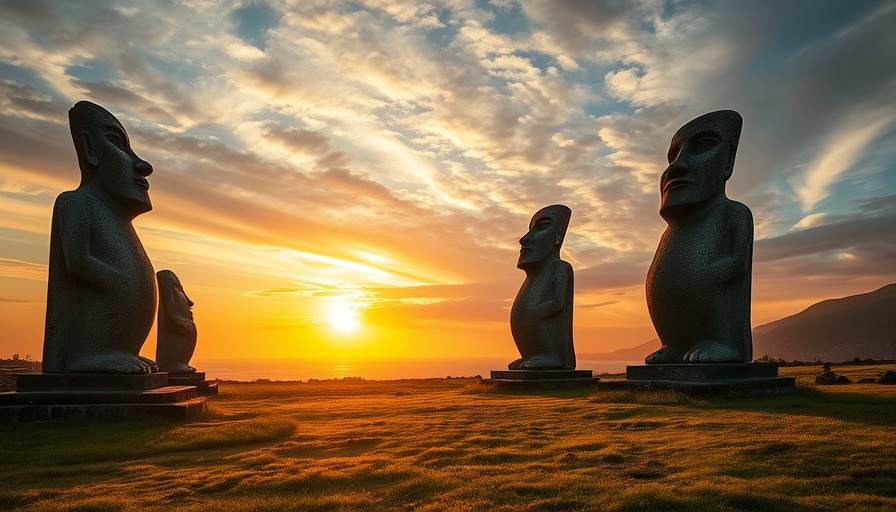
Unearthing Mysteries: The Fascination with Ancient Alien Theories
Across the globe, ancient structures like the Egyptian pyramids and the Nasca Lines hold secrets that continue to baffle historians and archaeologists. From their colossal scale to the precision of their designs, these monuments have sparked intriguing—and often bizarre—speculation about their origins. Some scholars and enthusiasts have raised a peculiar question: could these remarkable structures have been engineered by extraterrestrial visitors? As humanity embarks on a new chapter of space exploration, the allure of 'ancient aliens' invites us to ponder the possibilities.
Historical Context: Who Built The Pyramids?
The Great Pyramid of Giza, often touted as one of the most awe-inspiring achievements of the ancient world, stands firmly as a testament to human ingenuity and engineering prowess. Built around 2580–2560 BC during the Fourth Dynasty of the Old Kingdom, it required an estimated 2.3 million stone blocks, each weighing an average of 2.5 tons. Many historians attribute the construction to an organized workforce of skilled laborers, who utilized advanced knowledge of mathematics and logistics. However, the sheer scale and complexity of the pyramid leave some people wondering—what if their skills were not entirely human? Similar structures around the world, from Stonehenge to the Moai of Easter Island, raise eyebrows and ignite the imagination. Could this ambition have been inspired by some otherworldly presence?
Parallel Examples: Global Mystery!
Throughout history, numerous cultures have created monumental structures that are still celebrated today. In Peru, the Nasca Lines—huge geoglyphs etched into the desert floor—are so large that they can only be fully appreciated from the sky. Similarly, the ancient site of Gobekli Tepe in Turkey has captivated researchers with its intricately carved pillars, built thousands of years before the advent of writing. These structures often appear ahead of their time, leading the public to entertain various sensational theories, including those revolving around alien involvement.
Counterarguments: The Down-to-Earth Perspective
While alien theories capture the imagination, many archaeologists emphasize a more grounded interpretation of human history. They argue that the ingenuity and resourcefulness of ancient civilizations cannot be overstated. The Aztecs, Incas, and Egyptians all had considerable advances in engineering and organization that would seem extraordinary by modern standards. The argument against alien influence often hinges on the fact that these civilizations had their own myths, legends, and understanding of the cosmos that drove them to create what they did. They theorize that great discoveries stemmed from human ambition, innovation, and the universal need to connect with the divine, rather than extraterrestrial instruction.
Future Insights: What Lies Ahead?
As we forge deeper into the cosmos, our quest for knowledge can only fuel the conversation about our origins. Humanity stands on the brink of extraordinary discoveries, with missions to Mars and beyond unfolding before us. In this context, the fascination with aliens and ancient civilizations may reflect our own desire to connect with others in the universe. If the past demonstrates human ambition, our future may witness humans—perhaps even those from Earth—creating the next monuments in the stars.
Emotional Impact: The Human Connection to Our Past
The belief that ancient constructions may have been built by aliens taps into our deep-seated desire for connection and mystery. It invites us to reflect on our origins and the extraordinary lengths our ancestors went to leave their mark on the Earth. The imagination stretches beyond mere speculation into the realm of possibility, where stories of cosmic visitors remind us of the wonders of our past and perhaps an even greater destiny within the universe.
Acting on Curiosity: Exploring Ancient Aliens
This exploration into ancient sites encourages us to seek knowledge and understand historical contexts that shape our culture today. Individuals can take a proactive approach to learn about archaeology by visiting museums, engaging in local archaeological tours, or even participating in digs. The greater the understanding of our history, the more profound the connection to both the past and the universe can be.
In conclusion, the legends of ancient aliens may captivate us, but the pursuit of truth lies within humanity’s remarkable ability to innovate and adapt. Whether we find extraterrestrials or not, what we uncover about our history tells a compelling story of the human spirit.
 Add Row
Add Row  Add
Add 



Write A Comment